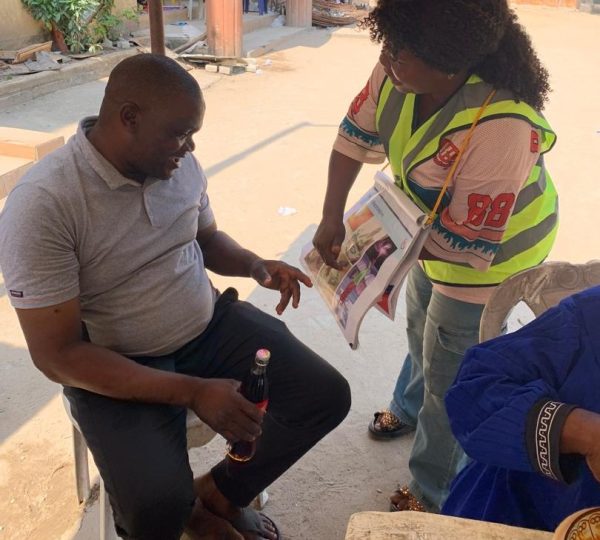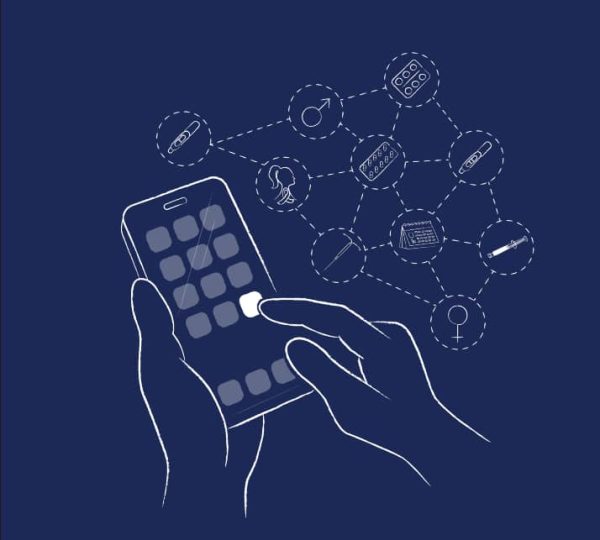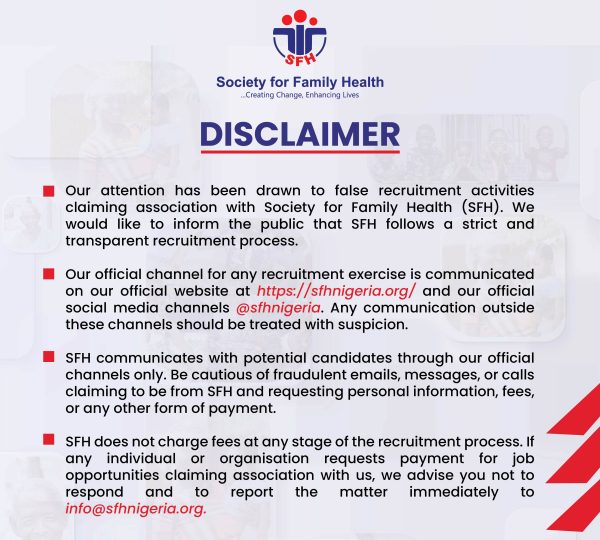FAKE DRUGS; A GLOBAL MENACE
By Mogbonjubade E. Adesulure and Ikwubiela Blessing
INTRODUCTION
Faking and counterfeiting of drugs is a global menace particularly prevalent in developing countries perhaps due to inadequate regulations and control. Arguably, most counterfeit drugs are manufactured in some Asian countries; however, there is
an increasing number of counterfeit medicines now being produced in Africa, Latin America, and some eastern European countries. According to the World Health Organisation, one in 10 medications sold in Africa are either fake or substandard and about 280,000 children die annually from treatment with fake medicines in sub-
Saharan Africa. Considering the prevalent poverty rate in sub- Saharan Africa the price of drugs could also be regarded as a contributing factor to the increasing number of counterfeit medicines in the market, especially in developing countries such as Nigeria.
WHAT ARE FAKE DRUGS?
Fake drugs are also referred to as counterfeit drugs fraudulently produced or mislabeled and purchased by consumers who believe them to be legitimate treatment. These drugs can cause a range of health complications. They are usually produced in
substandard conditions and with the wrong amount of active ingredients. They are also produced with the intention to deceive the consumer about the origin and authenticity of the drug/medicine. Counterfeiters can fake a variety of pharmaceutical drugs. The most common counterfeited drugs are the chronic medications. Chronic medications include antibiotics, corticosteroids, diabetes medicines, hypertensive medicines, drugs for erectile dysfunction, cancer drugs amongst others.
Examples of counterfeited drugs are contraceptives such as the Postinor 2, erectile
dysfunction drugs such as Viagra and Cialis, Xanax, Percocet, malaria medicines, HIV/AIDS medications, generic antibiotics, acetaminophen, e.t.c.
DANGERS OF FAKE DRUGS
Fake drugs are dangerous and when consumed could lead to several health complications for the following reasons:
- Counterfeit drugs may contain the wrong amount of the active ingredient. The active ingredient may be too high which can lead to complications and/or death. And on the other hand, the active ingredient could also be too low leading to treatment failure.
- Counterfeit drugs which contain poisonous substances can cause severe side effects and may result in poisoning which is detrimental to health and also puts an individual at risk of other health complications.
SIDE EFFECTS OF FAKE DRUGS
Consumption of fake drugs could lead to several health problems. These health problems usually depend on the ingredients that make up the counterfeit medicine. In the case where the counterfeit medicine does not contain the active ingredients, the
medicine fails to help the patient get better which ultimately harms the patient. Some side effects of counterfeit medicines include nausea, vomiting, diarrhoea, organ failure, and death.
Counterfeit medicines could lead to an exacerbation of symptoms of a chronic illness.
KEY PLAYERS IN THE FAKE DRUG BUSINESS
- Drug manufacturers: these are both the local and foreign manufacturers who produce the counterfeit medicine.
- Drug importers and sellers (wholesale, retail and informal sellers): these are the individuals involved in distribution and sale of counterfeit drugs. They may or may not be aware of the authenticity of the drugs. The informal drug sellers do not have complete information on the drug but sell it in an unregulated manner to make profit. They also store drugs in unfit conditions which also reduces the potency of the drugs. 3. Consumers/patients: many factors contribute to the purchase and consumption of fake drugs. They include but not limited to accessibility/availability, cheaper prices, confidentiality and flexible payment methods. All these factors contribute to the exposure of individuals to fake drugs.
FAKE DRUGS AS A THREAT TO PUBLIC HEALTH IN NIGERIA
The National Agency for Food Drug Administration and Control (NAFDAC) in their 2018 investigations revealed that N4.7 billion worth of fake drugs were destroyed in four exercises in Abuja, Kaduna, Gombe, and Ogun states. The increased number of
fake drugs is alarming and has become a major contributor to high mortality rate in the country. The ease of availability and consumption of fake drugs has not only contributed to high death rate but also prolonged periods of illness and led to the
development of severe health complications. A typical example is the counterfeit Postinor 2 (an emergency contraceptive), which when consumed, could lead to several health complications.

Sadly, the consumption of these counterfeit medicines has contributed to the growing problem of drug resistance and health complications. The World Health Organization (WHO) warns that the availability and consumption of fake drugs leads to loss of
confidence in healthcare providers and health systems.
According to the Pharmaceutical Society of Nigeria, the main sources of fake drugs in Nigeria are India, China, and Pakistan amongst others. NAFDAC in 2019 declared that about 17% of all pharmaceuticals drugs in Nigeria are fake. Lagos has one of the largest open drug markets in the country where all kinds of drugs
are sold in open spaces. In such places, one does not need to be a pharmacist or a patent propriety medicine vendor to buy and sell drugs – professionalism is thrown out the window. In this situation, it is difficult to differentiate between the fake and the genuine drugs. The Pharmaceutical Society of Nigeria also disclosed recently that many illegal drug outlets are springing up in the country. In these outlets, expired drugs are relabeled for sale.
Fake drugs are also being sold and bought online. Consumers not only access the internet to retrieve health information anymore. Internet pharmacies are now available and can be accessed globally. The internet pharmacies are springing up at an alarming
rate in Nigeria.
IDENTIFING FAKE DRUGS
Fake drugs are almost visually identical to the genuine products and are usually
difficult to detect. However, it is important that consumers are well informed on how
to identify fake drugs
Below are some tips to identify fake drugs
Visual inspection of the package
1. Examine the package and check if it is different from what you previously
know
2. Check if the security seal has been tampered with by looking for breaks or tears in the seals
3. Look for unusual font sizes, print, colour, and spelling errors
4. Check the legibility of the information on the package
5. Check if the batch number, expiry date and manufacturer’s address on the secondary package are the same with that on the primary package
6. Check if the package has the exact manufacturer’s address, and not just the country address.
7. Check if the registration number (NAFDAC number as the case is for products marketed or sold in Nigeria) is properly printed or if it appears to be tampered with.
Visual inspection of the pamphlet containing information on dosage
Check for differences in the colour, uniformity, size, shape of the drug. Check for chips, cracks, and discolouration on the tablet. An example is the fake postinor- 2 which come in white packs. According to the Society for Family Health, the major distributors of Posinor-2, the real pack come in green with gold stripes.
Use mobile authentication services such as Chekkit and using the NAFDAC SMS. I.e the Postinor- 2 employs the mobile authentication services scheme which allow consumers/users to verify the authenticity of the product through the use of scratch codes. Once the consumer scratches a panel on the Postinor- 2, a unique, one-time short code is revealed, which is then sent to the number 1393 using any of the GSM operators. After which, the consumer receives a response in form of a text message (SMS) stating that the product is either genuine or suspected fake.
Source
Buying drugs from unqualified vendors and hawkers in bus stops, markets and on the streets increases one’s chances of buying fake drugs.
Price
If the price of the drug is way below its usual price, then one should think twice before buying it. Although some fake drugs are sold at the same price as the genuine ones.
In conclusion, they are thousands of counterfeit drugs in the market. The negative impact of these drugs on public health of nations cannot be overemphasized. All countries are affected
by this, but the greatest impact appears to be felt in the developing countries especially in sub-Saharan Africa. Extreme care should be taken when purchasing drugs. Some of the tips mentioned above can help reduce one’s chances of purchasing and consuming fake drugs.
Sources
Anti-counterfeiting: A Global Guide 2018 – World Trademark Review
Counterfeit drugs: ‘People are dying every day’ – BBC News
Fadlallah, R., El-Jardali, F., Annan, F., Azzam, H., Akl, E. A. (2016). Strategies and Systems-Level Interventions to Combat or Prevent Drug Counterfeiting: A Systematic Review of Evidence Beyond Effectiveness. Pharmaceutical Medicine. 30(5):263-276.
https://allafrica.com/stories/202102260295.html
https://apps.who.int/gb/ebwha/pdf_files/WHA63/A63_23-en.pdf
https://guardian.ng/features/addressing-concerns-over-rise-in-fake-drugs/
https://www.bbc.com/news/av/business-47640706
https://www.fda.gov/drugs/buying-using-medicine-safely/counterfeit-medicine
https://www.healthhype.com/what-are-fake-drugs-counterfeit-medicines-dangers-side-effects.html
https://www.ncbi.nlm.nih.gov/pmc/articles/PMC4105729/
https://www.pharmapproach.com/consequences-of-fake-drugs/
https://www.publichealth.com.ng/how-to-identify-fake-medicines-in-nigeria/
https://www.thelancet.com/journals/lancet/article/PIIS0140-6736(15)00394-3/fulltext
https://www.uspharmacist.com/article/counterfeit-meds
https://www.vanguardngr.com/2019/10/fake-drugs-inside-nigerias-market-of-death/
Sproxil Nigeria: Ingenuity in the Fight Against Counterfeit Drugs – Mentor Capital Network




